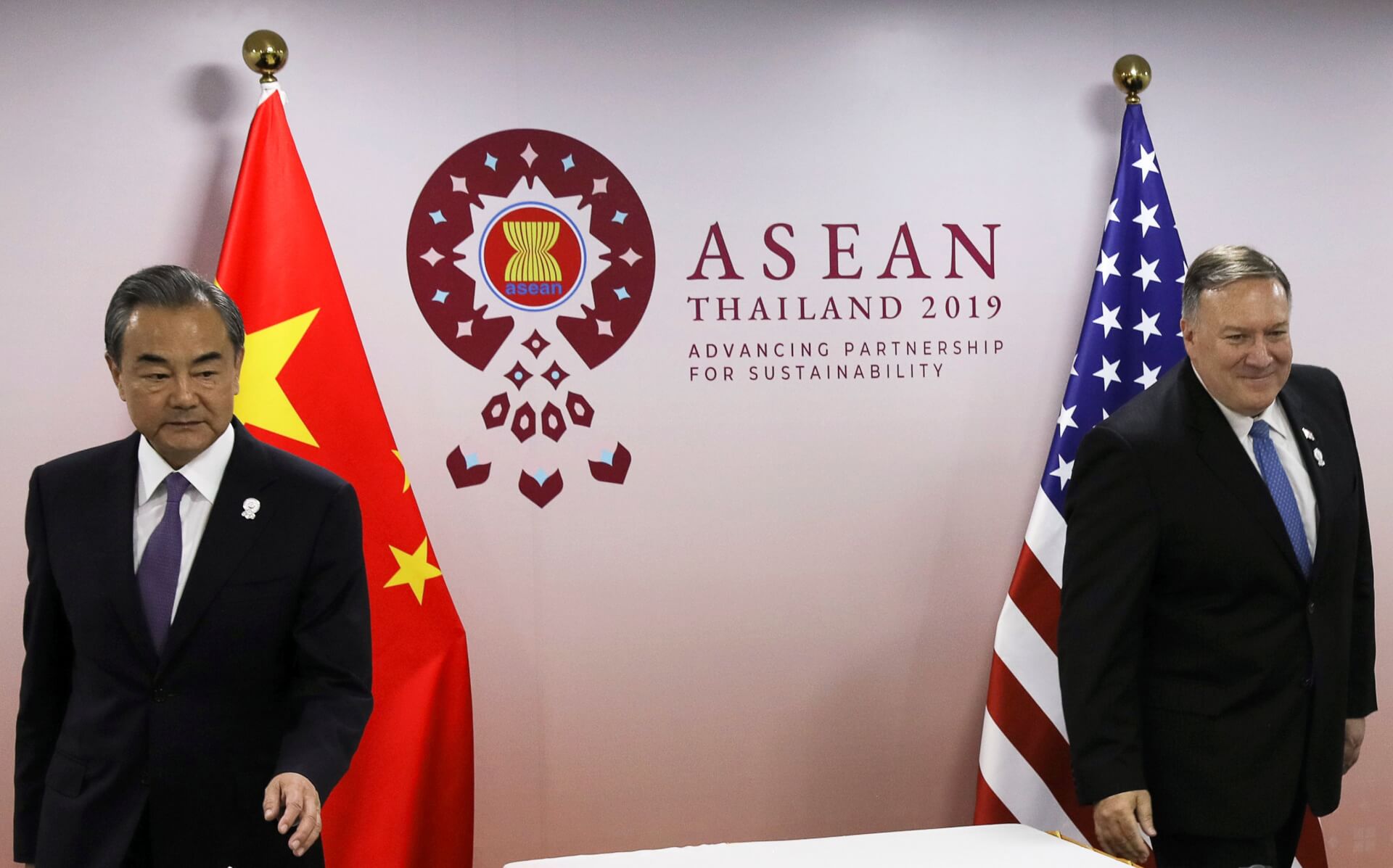China called upon ten diplomats from Southeast Asian nations to work together towards resolving the South China Sea (SCS) dispute. Beijing’s move comes in light of US Secretary of State Mike Pompeo’s revision of the US’ position on the maritime dispute last month. In his statement, Pompeo reaffirmed Washington’s commitment to SCS arbitration, which rejected Beijing’s territorial claims in the area. Unlike in the past, it detailed the US position on specific SCS disputes, including the Scarborough Reef and the Spratly Islands, and even affirmed its support to Vietnam.
Pompeo’s statement criticized China for “bullying” the Association of Southeast Asian Nations (ASEAN), underscoring the US’ intent of not allowing Beijing to treat the SCS as its “maritime empire”. In response, the Chinese Foreign Ministry reiterated that the US was “undermining peace and stability” in the region to drive a “wedge between regional countries”. China’s claims in the SCS are contested by Vietnam, Indonesia, Philippines, Malaysia, and Brunei.
In the wake of Pompeo’s statement, China is amplifying its diplomatic outreach to the ASEAN states to show its “willingness” to resolve the dispute. In the past, Beijing has placed on the SCS issue on the backburner to pursue bilateral economic cooperation with the disputant states. However, more recently, a Chinese official said that the littoral states should resume negotiations on the code of conduct pertaining to the dispute “as soon as possible”. Discussions on a potential code of conduct between China and the ASEAN nations have dragged on for almost two decades. In 2002, ASEAN and China adopted a non-binding Declaration on the Conduct of Parties in the South China Sea (DOC), which was formally adopted in 2011. Negotiations on a legally binding code of conduct began in 2013, and in 2018 the parties released a Single Draft South China Sea Code of Conduct Negotiating Text (SDNT), which will serve as the basis for the adoption of a Code of Conduct in the SCS. In last year’s ASEAN-China summit, Chinese Premier Li Keqiang announced that the first reading was completed and proposed a three-year timeline to finish the code by 2021.
Since then, little progress has been achieved, largely owing to the coronavirus pandemic. Several meetings to negotiate the dispute were scheduled this year, beginning in Brunei in February, followed by the Philippines in May, Indonesia in August, and China in October. The likelihood of China pushing for negotiations is increased in the face of the US’ assertive position on the dispute. In a meeting with Indonesian Foreign Minister last week, China vocalized its desire “to work with ASEAN countries to ensure an early conclusion for the code of conduct”.
Experts suggest that the ASEAN states must move cautiously on the code of conduct talks, especially considering the backdrop of growing China-US tensions. Collin Koh, a researcher at the S Rajaratnam School of International Studies in Singapore, said, “The new US position has given a morale boost to the ASEAN claimants.” Still, he added, ASEAN states should “try to prevent them from being derailed by the US-China tensions”.
Both the US and China have been conducting military exercises in the disputed waters since last month. According to a statement by the US Navy, the USS Nimitz and USS Ronald Reagan performed operations in the South China Sea “to support a free and open Indo-Pacific”. The People’s Liberation Army (PLA) of China, on the other hand, said it will conduct military drills “in waters southeast off Hainan Island from August 24 to 29”. Previously, the PLA conducted “large scale” military exercises in the Yellow Sea from August 22 to 26.
In a bid to ease tensions between the two superpowers, earlier this month, the Philippines announced that it would refrain from conducting joint naval exercises in the contested waters of the SCS. Filipino Defence Secretary Delfin Lorenzana said, “President Rodrigo Duterte has a standing order to us, to me, that we should not involve ourselves in naval exercises in the South China Sea except our national waters, the 12-mile distance from our shores.”
Unlike the Philippines, Vietnam allowed Talisman Vietnam to drill for oil and gas in mid-June. This was contested by China, at first diplomatically, and then through the threat of military action against Vietnamese bases if the drilling did not cease. Eventually, the drilling was halted by Vietnam. Nevertheless, although tensions continue to grow in the maritime domain, Vietnam and China vowed to make their “border areas peaceful and friendly”. During an event commemorating the 20th anniversary of the demarcation of the land boundary between the two nations, both China and Vietnam pledged to cooperate on this front. China’s Foreign Minister said that the boundary settlement between the two countries should “promote regional cooperation via the border areas, and draw on the successful practice in solving land boundary issues to seek an early settlement of maritime disputes”. The SCS remains a dynamic region with varying interests, and talks at the multilateral and bilateral levels need to be carefully observed to decipher the future course of the maritime dispute.
China Intends to Work Together With ASEAN Nations to Resolve SCS Dispute
US pressure is pushing Beijing to hasten talks on a binding code of conduct in the SCS.
August 24, 2020

US Secretary of State Mike Pompeo with Chinese Foreign Minister Wang Yi, during ASEAN Foreign Ministers' Meet, Bangkok, 2019. SOURCE: JONATHAN ERNST/ REUTERS
